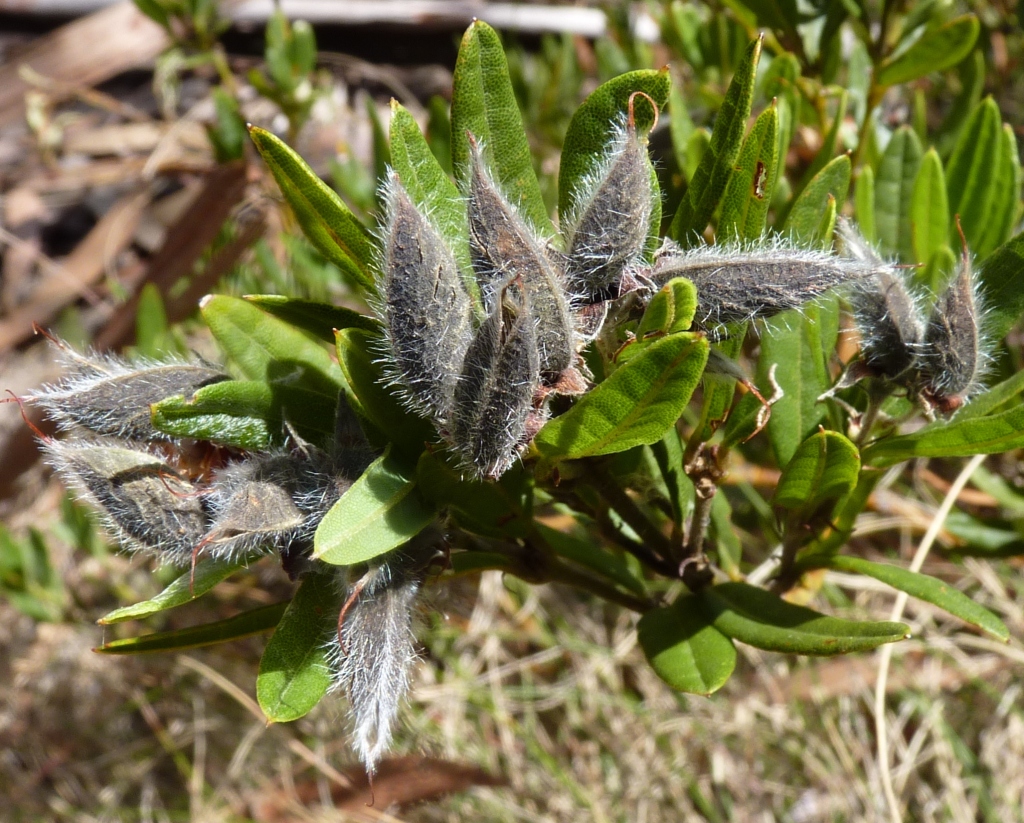Podolobium alpestre
(F.Muell.) Crisp & P.H.Weston Alpine Shaggy-peaProcumbent or ascending shrub to 1.3 m tall; young stems pubescent. Leaves opposite or in irregular whorls of 3, broad-oblong to obovate, 1–5 cm long, 3–14 mm wide, upper surface glabrescent, reticulate, lower surface paler, sparsely hairy to glabrous, margins recurved, apex mucronate; petiole to c. 3 mm long; stipules subulate, 1.5–3 mm long. Inflorescence a few-flowered, terminal or axillary raceme; pedicels 1–3 mm long, silky; bracts subulate-lanceolate, 1–2 mm long; bracteoles linear, 2–4 mm long. Calyx 5–6 mm long, silky, teeth about equal to tube; corolla 10–12 mm long, orange-yellow sometimes with red markings; standard suborbicular, emarginate, orange-yellow with a reddish centre; keel sometimes red; ovary stipitate, ovules c. 4–6. Pod ovoid to obloid, 8–15 mm long, with several warty ridges, acuminate, villous; seeds usually 2–6, c. 2.5 mm long. Flowers Nov.–Feb.
CVU, EGU, HSF, HNF, MonT, HFE, VAlp. Also NSW, ACT. Apart from isolated low-altitude occurrences near Mt Cole in western Victoria and the Macedon Ranges, apparently confined to montane and subalpine parts of the Eastern Highlands where often common.
Jeanes, J.A. (1996). Fabaceae. In: Walsh, N.G.; Entwisle, T.J., Flora of Victoria Vol. 3, Dicotyledons Winteraceae to Myrtaceae, pp. 663–829. Inkata Press, Melbourne.
 Spinning
Spinning
